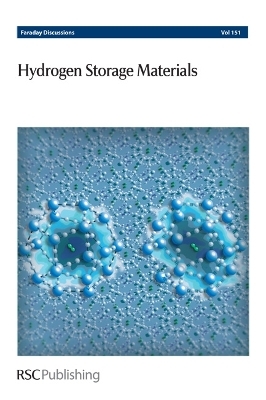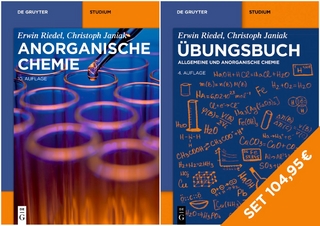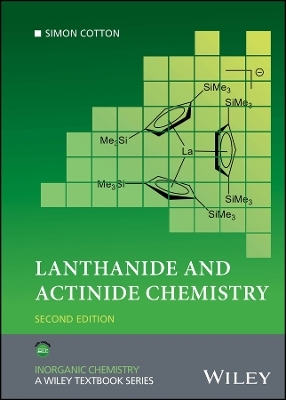
Hydrogen Storage Materials
Royal Society of Chemistry (Verlag)
978-1-84973-236-9 (ISBN)
Hydrogen is widely billed as the fuel of the future. For this to be a reality there is a pressing need for a safe, economic and reliable way to transport hydrogen, particularly for automotive applications. This has prompted a world-wide effort to develop novel materials that are re-usable and capable of storing and releasing significant (> 6 wt%) quantities of hydrogen. In addition to compressed (either liquid or gaseous) hydrogen, two main themes are being explored: adsorption of hydrogen by materials and "chemical hydrogen" where hydrogen is reacted with a material. The discussion focusses on both themes, from synthesis and characterisation to application of such novel materials. The focusses on the wider issues involved in synthetic routes, characterisation, materials properties, rather than simply on examples. The importance of the interplay of theory and experiment is stressed. Faraday Discussion 151, organised by the Faraday Division, aims to bring together the diverse range of workers in the field of hydrogen storage materials, from those involved in materials discovery and characterisation, to those studying mechanisms or developing applications. The Discussion will both inform people of alternative strategies and encourage new ideas and approaches. The themes cover: application of theory and spectroscopic methods to understand hydrogenation/dehydrogenation mechanisms; novel approaches such as catalysed hydrogenation/dehydrogenation of organic molecules, encapsulation of nanosized materials in carbon or polymers; chemical hydrogen: characterisation and properties of main group and transition metal borohydrides and alanates, ternary and quaternary metal hydrides, reactive hydride composites; adsorbed/physisorbed hydrogen on or in MOFs, promoted carbons and other materials with large internal or external surface area; and applications including uses for automotives and novel battery materials.
Faraday Discussions documents a long-established series of Faraday Discussion meetings which provide a unique international forum for the exchange of views and newly acquired results in developing areas of physical chemistry, biophysical chemistry and chemical physics. The papers presented are published in the Faraday Discussion volume together with a record of the discussion contributions made at the meeting. Faraday Discussions therefore provide an important record of current international knowledge and views in the field concerned. The latest (2012) impact factor of Faraday Discussions is 3.82.
Preface;
Introductory Lecture;
Pore with gate: modulating hydrogen storage in metal-organic framework materials via cation exchange;
The effect of host relaxation and dynamics on guest molecule dynamics in H2/tetrahydrofuran-hydrate;
The role of Ni in increasing the reversibility of the hydrogen release from nanoconfined LiBH4;
Analysis of hydrogen storage in nanoporous materials for low carbon energy applications;
Characterisation of porous hydrogen storage materials: carbons, zeolites, MOFs and PIMs;
General discussion;
Synthesis of small metallic Mg-based nanoparticles confined in porous carbon materials for hydrogen sorption;
The effect of complex halides and binary halides on hydrogen release for the 2LiBH4:1MgH2 system;
Incorporating magnesium and calcium cations in porous organic frameworks for high-capacity hydrogen storage;
Control of hydrogen release and uptake in amine borane molecular complexes: thermodynamics of ammonia borane, ammonium borohydride, and the diammoniate of diborane;
Probing the binding and spatial arrangement of molecular hydrogen in porous hosts via neutron Compton scattering;
General discussion;
Mobility and dynamics in the complex hydrides LiAlH4 and LiBH4;
Novel sodium aluminium borohydride containing the complex anion [Al(BH4,Cl)4]-;
Theoretical study of the vibrational properties of NaAlH4 with AlH3 vacancies;
Synthesis of LiNH2 + LiH by reactive milling of Li3N;
In situ powder neutron diffraction study of non-stoichiometric phase formation during the hydrogenation of Li3N;
Hydrogen storage and ionic mobility in amide---halide systems;
General discussion;
Homogenous dehydrogenation of liquid organic hydrogen carriers catalyzed by an iridium PCP complex;
YMn2Hx and RMn2FeyH6 (R Y, Er) studied by Raman, infrared and inelastic neutron;
scattering spectroscopies;
Hydride formation in Mg-based systems processed by reactive milling;
Performance of a full-scale hydrogen-storage tank based on complex hydrides;
Performance of a metal hydride store on the æ"Ross BarlowÆ" hydrogen powered canal boat;
A multidisciplinary combinatorial approach for tuning promising hydrogen storage materials;
towards automotive applications;
General discussion;
Effective hydrogen storage: a strategic chemistry challenge;
Poster titles;
List of participants;
Index of contributors
| Erscheint lt. Verlag | 1.9.2011 |
|---|---|
| Reihe/Serie | Faraday Discussions ; Volume 151 |
| Mitarbeit |
Sonstige Mitarbeit: Royal Society of Chemistry |
| Verlagsort | Cambridge |
| Sprache | englisch |
| Maße | 156 x 234 mm |
| Themenwelt | Naturwissenschaften ► Chemie ► Anorganische Chemie |
| Naturwissenschaften ► Chemie ► Physikalische Chemie | |
| Technik ► Elektrotechnik / Energietechnik | |
| ISBN-10 | 1-84973-236-1 / 1849732361 |
| ISBN-13 | 978-1-84973-236-9 / 9781849732369 |
| Zustand | Neuware |
| Haben Sie eine Frage zum Produkt? |
aus dem Bereich


